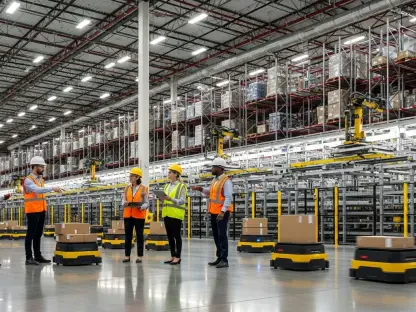In today’s rapidly advancing digital landscape, artificial intelligence tools have become entrenched in the workplace, offering both significant potential benefits and complex risks. Recently, a trend has emerged, with employees increasingly gravitating toward unauthorized AI applications for their daily tasks. This surge in informal AI adoption highlights the urgent need for organizations to implement policies and guidelines to navigate the evolving technological ecosystem and safeguard against potential security threats.
Unveiling Unauthorized AI Tools in the Workplace
Unauthorized AI tools are those not formally sanctioned by an employer but utilized by employees to enhance productivity, streamline workflows, and automate mundane tasks. These tools leverage AI’s core principles of data processing, machine learning, and automation, allowing users to efficiently handle large datasets and perform repetitive tasks without human intervention. They arise from the scarcity of specific tools within organizations and reflect an employee’s technological curiosity and desire for increased efficiency. As AI technologies continue to develop, unauthorized tools push the boundaries by integrating new features and capabilities that companies may not have adopted yet.
These tools hold significant relevance within the broader technological ecosystem. In an era where innovation burgeons at an unprecedented pace, unauthorized AI tools represent employees’ bid to stay ahead. While companies aim to balance agility with security, these tools reflect the tug-of-war between individual users’ quests for efficiency and enterprises’ needs for data protection. In this technological landscape, such tools become a double-edged sword—simultaneously offering opportunities for innovation and posing significant risks to data integrity and intellectual property.
Key Functionalities: Elevating Work Efficiency
Among the critical features of unauthorized AI tools is their ability to process vast amounts of data quickly and automate routine processes. These capabilities enable better decision-making and free up employees to focus on more strategic tasks, effectively raising productivity. By parsing through datasets and extracting meaningful insights, unauthorized tools can reduce the duration and resources required for numerous business operations, enhancing organizational agility.
Accessibility and user-friendliness are also notable aspects. Despite lacking formal authorization, these tools often feature intuitive interfaces that appeal even to those users with limited technical expertise. They facilitate easy integration into existing workflows without extensive training or significant costs, making them an attractive option for employees seeking efficiency on limited resources. However, these user-friendly facets also pose a challenge to corporate oversight, as unregulated use could leave organizations vulnerable to cybersecurity threats and data breaches.
Evolution and Emerging Patterns
In recent years, unauthorized AI tools have undergone significant evolution, spurred by technological advances and employee-driven innovation. These innovations continue to shape consumer behavior and the industry’s direction. The rise of generative AI technologies and sophisticated data analytics has imbued these tools with an even broader range of applications, emphasizing the growing comfort and reliance on informal tech by ordinary users.
Emerging trends suggest an increasing normalization of unauthorized tools within the workplace. Both the democratization of AI and the boundary-blurring between personal and professional tech use play crucial roles in this trend, pushing employers to reconsider and adapt their official technology offerings. Industry-wide discussions now focus on finding a balanced approach that emphasizes the benefits of skilled AI deployment while maintaining stringent data protection protocols.
Practical Impacts Across Industries
Unauthorized AI tools have pervaded various industries, from finance and healthcare to marketing and retail. In finance, these tools have been used to analyze market trends and automate data entry tasks, granting analysts more time for substantive strategies. Meanwhile, healthcare workers have harnessed them for scheduling and patient data management, albeit facing potential privacy implications. On the marketing front, employees have applied AI tools to generate content and optimize advertisement campaigns, showcasing creativity unbounded by traditional software limitations.
Notable implementations include the use of generative AI tools in creative industries, where images and text are developed more quickly than ever before. Such use cases underscore not only the potential for transformative industry impacts but also the necessity for organizations to craft guidelines that shape responsible and creative AI adoption.
Navigating Disparities and Obstacles
The adoption of unauthorized AI tools does not come without its set of challenges. Technical hurdles such as data integration issues and compatibility with existing systems can impede smooth deployment. Moreover, regulatory compliance concerns loom large, especially where sensitive data must not be freely accessed or manipulated. These obstacles are compounded by market conditions, including the rapid pace of AI development, potentially outpacing regulatory frameworks.
Efforts are ongoing to counter these challenges. Technological innovation is occurring alongside regulatory adjustments aimed at creating environments conducive to responsible AI use. However, organizations must remain vigilant, implementing strategic and cross-functional policies to minimize the risks involved and ensure accountability.
Anticipating Future Trajectories
Looking ahead, unauthorized AI tools are poised to become even more sophisticated and pervasive. Future developments may include more seamless integration with enterprise systems, improved security features, and enhanced capabilities to cater to specific industry needs. Such advancements have the potential to revolutionize workplace dynamics, offering unprecedented levels of operational efficiency and creativity while maintaining control over data loss and leakage.
As AI technology becomes increasingly ubiquitous, businesses must consider precise frameworks to foster innovation through approved channels. This entails not only statutory measures but also clear communication toward achieving a balance between harnessing AI’s potential and mitigating associated risks. A forward-looking approach is essential to align organizational goals with technological evolution.
Reflective Verdict: Balancing Innovation and Security
In summary, unauthorized AI tools within the workplace have undeniably reshaped the traditional work landscape, introducing both opportunities for enhanced efficiency and significant risks. They provide a glimpse into the future of AI applications across industries, highlighting the power of informal innovation in an era of constant technological development. As organizations grapple with these tools’ benefits and challenges, strategic consideration and policy development will be critical in navigating this complex digital frontier. While unauthorized AI tools’ current state and trajectory may be promising, ensuring responsible adoption and usage remains paramount to maintain a secure and progressive workplace.









